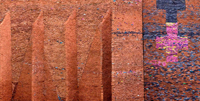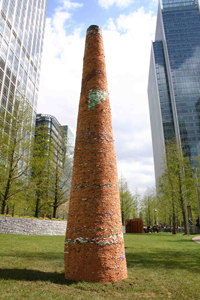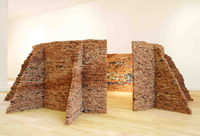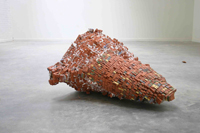
___________________________________________________________________________________________________
_
about | exhibitions | artists | venues | workspaces
___________________________________________________________________________________________________
_
Andrew Burton | UK

Harker's Wall, 2007, Novellus Castellum Project Space, Newcastle (photo by Conor Lawless)






_

___________________________________________________________________________________________________
 _
_ _
_ _
_ _
_ _
_ _
_
Ábhar agus Meon, Sixth World Archaeological Congress, School of Archaeology, University College Dublin, Dublin 4, Ireland
(@) http://www.ucd.ie/wac-6 (@) http://www.amexhibition.com (e) info(at)amexhibition.com
(t) +353 (0)87 654 8301 (f) + 353 (0)1 716 1184
Designed by iArchitectures (2008).
In the work for this exhibition, my interest in the relationship between archaeology and sculpture is not so much to do with digging things up that have been hidden, as in the way that things that remain visible over time change – or retain – their meanings. I am interested in the reuse of objects and materials. I have been working on a series of ‘brick’ sculptures (but where the bricks are tiny) which are sequentially developed so that the sculptures go through a series of transformations: the same bricks are used to make different works, each one made from the residue of the last. As each new sculpture is painted, or cemented or glazed layers of colour or matter gradually accrete on the surface, a kind of residual evidence of earlier incarnations.
The series began in India, where I became interested in the processes of brick manufacture. In India, little is left to waste – bricks are always recycled into new buildings. In Delhi I came across one neat stack of old bricks. Many of these were painted a particular blue colour on one side. Any Indian person would immediately recognise this blue as the colour that many Brahmins paint their houses. Whether these bricks could be reused for a ‘non’ Brahmin building, I do not know, but as long as those fragments of paint remain on the surface the bricks will hold a particular meaning.
In North East England, where I live, the same holds true: some stone buildings in the Border areas contain within their walls distinctive square sandstone blocks. To someone who knows this area these are recognisable as the stones that have been plundered from Hadrian’s Wall. They carry with them a certain history, one type of wall with a very particular purpose transferred into another.
In fact this way of working came about because I had problems storing the many large sculptures I was beginning to accumulate: having deposited enough large objects around the world, I decided that instead of adding to the mass of art I would use a more transient approach. In this respect, these works perhaps run counter to some of my assumptions about the way archaeology privileges permanence and immutability. On the other hand, the fact that the cosmos ultimately recycles everything is a truth that holds for all objects.
-Andrew Burton (May 2008)
More information on Andrew's work can be found at: http://research.ncl.ac.uk/sacs/projects/Burton.html

Cathedral, 2008, Canary Wharf, London

Cathedral, 2008, Canary Wharf, London

Stell, 2007, University of Northumbria Gallery

Resurrection, 2006, European Ceramics Work Centre
















